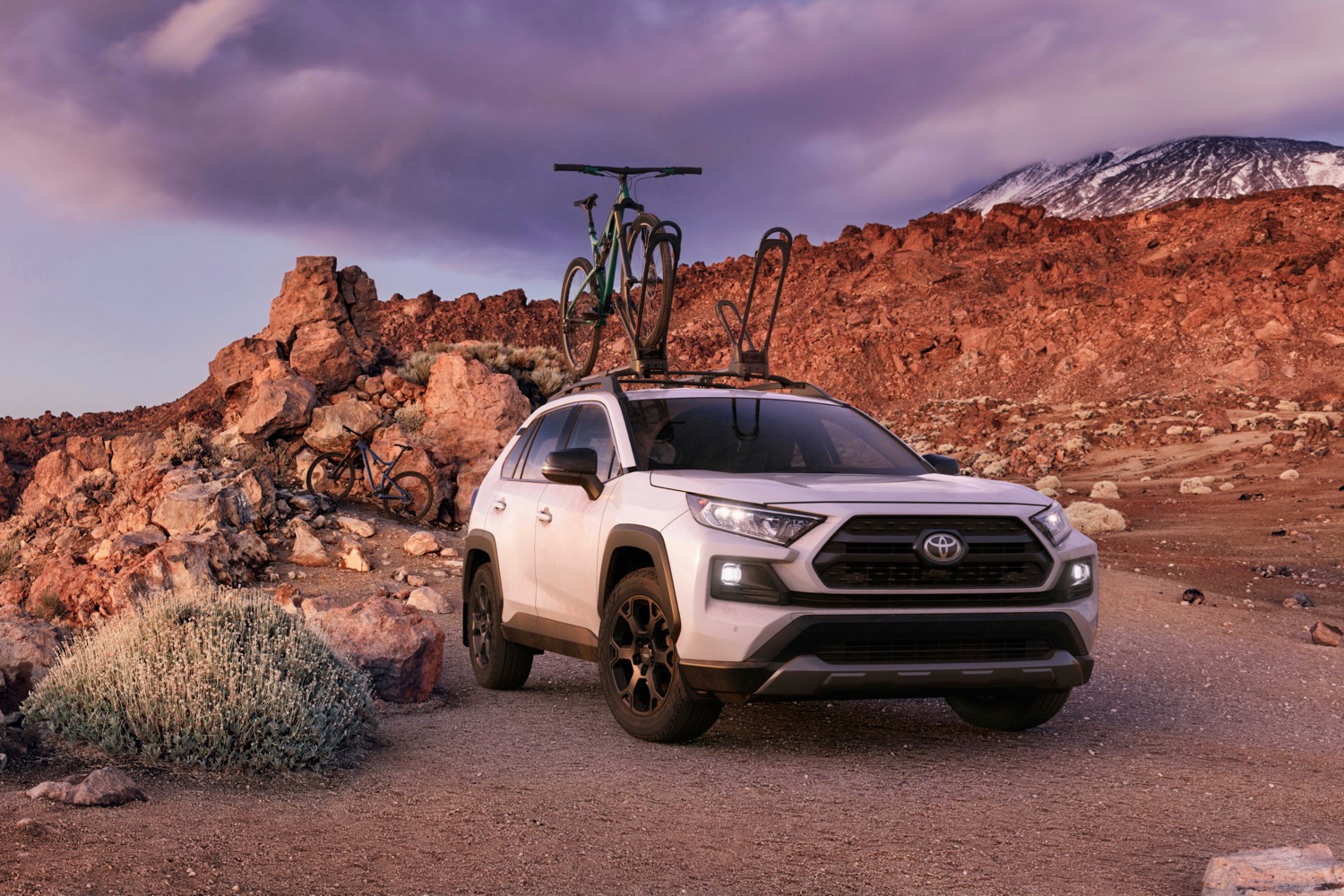The Toyota RAV4 isn’t a bona fide off-roader like its Land Cruiser and 4Runner stablemates, but Toyota insists the current version can handle mud and dirt better than most vehicles of its type. The automaker is doubling down on that claim with the new 2020 RAV4 TRD Off-Road model, which debuts at the 2019 Chicago Auto Show.
Because it shares a platform with cars like the Corolla and Prius, the RAV4 isn’t an obvious candidate for an off-roader. But Toyota is making the best of what it has. The TRD Off-Road is based on the RAV4 Adventure trim level, which boasts a respectable 8.6 inches of ground clearance and a torque-vectoring all-wheel drive system that shunts power back and forth between the rear wheels. The system also features multiple driving modes for different types of terrain.
Toyota then changed the suspension setup, using lessons learned from its RAV4 rally car. Yes, Toyota really did build and race a RAV4 rally car at one time. TRD stands for Toyota Racing Development, after all. And it builds the Supra, too.
The TRD Off-Road also features Falken Wildpeak A/T Trail tires, which are designed to handle more rugged terrain than the standard RAV4 tires. The rubber is wrapped around model-specific 18-inch wheels. Fender flares, a new front bumper, and a new grille help give the TRD Off-Road a more aggressive look. The interior gets red trim and accent stitching, SofTex upholstery, and lots of TRD badging.
The standard RAV4 is available with both hybrid and conventional gasoline powertrains, but Toyota will only offer the latter on the TRD Off-Road. A 2.5-liter four-cylinder engine produces 203 horsepower and 184 pound-feet of torque, and is connected to a continuously variable transmission (CVT).
The 2020 Toyota RAV4 TRD Off-Road goes on sale later this year. Pricing will be announced closer to the on-sale date, but expect the new model to command a premium over the RAV4 Adventure, which starts at $32,900. The 2019 Chicago Auto Show is proving to be a busy one for Toyota, with the 2020 Tacoma pickup truck and Sequoia TRD Pro, a version of Toyota’s seven-seat family SUV with enhanced off-road capability, also debuting in the Windy City.










